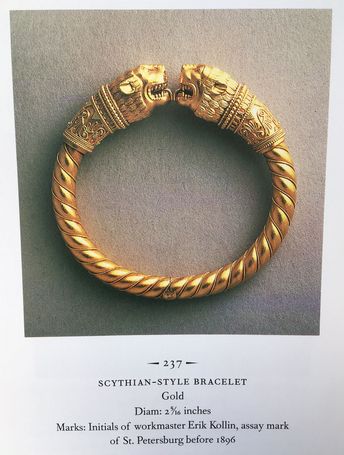Dear members,
we had a lot of snow this year. At home enough time to write something about
Erik Kollin.
„Erik Kollin (*28.12.1836 - 16.07.1901), born at Brödtorp, Pohja/Finland, was trained by and later worked for August Holmström.
He opened his own workshop in 1870.
Fabergé gradually contracted a network of skilled master goldsmiths, all of whom were owners of their workshop.
The entire production of Fabergé was carried out in these ateliers according to designs provided by the employer.
Before a contact was signed, the prospective craftsman underwent intense scrutiny – only the best of the best was good enough für Fabergé.
A workshop collaborating with him was the foremost „nursery“ for new independant workmasters.
Kollin inturn traines the future workmasters Antti Nevalainen and Gabriel Nykänen.
Nevalainen trained and worked with Hjalmar Armfelt.
Henrik Wigström worked with Michael Perkin from 1884 until his colleague's death in 1903, at which the time he became Fabergés third workmaster.
August Holmström trained his own son and successor Albert and his son-in-law Oscar Pihl, who headed Fabergé's jewelry workshop in Moscow.“ (a)
„Stylistically Erik Kollin lent primarily toward the revival movement.
He reproduced antique models in dull gold of objects from the of the Scythian Treasure, discovered near Kerch in the Crimea.
Alexander III, found it difficult to distinguish these replicas from the originals.“ (b)

Erik Kollin is also known for the first imperial egg the „Hen Easter Egg“ that was most likely made in Kollins workshop in 1885, in the same year for Emperor Alexander III, beginning an Easter tradition lasting until the end of the Romanov Dynasty in 1917.
Kollin kept supplying Fabergé until his death, in 1901.
His widow Henrika (Henrietta) carried on with the independent workshop after his death and was granted the use of her late husband’s workmaster mark until 1917. (c)
„The artefacts produced by Kollin for Fabergé before his departure in 1886 generally bears his initials
EK, together with Fabergé's hallmark and are frequently to be found in a Fabergé box.
Evidently these pre-date the change of hallmarks in 1899.
Objects bearing EK mark only and produced between 1885 and 1899 should be considered as the work of an independent operator, unless cased by Fabergé.“ (d)
Workshop:
1870 - 9, Kazanskaya Street, St. Petersburg
Source:
a) Jewels From Imperial St. Petersburg, Ulla Tillander Goldenhielm, Helsinki 2012, p. 278
b) Carl Fabergé - Goldsmith to the Imperial Court of Russia, A. Kenneth Snowman, New York 1983, p. 48
c) CF.: fabergereasearch.com
d) Wikipedia
Photo: Fabergé in America, Géza von Habsburg, San Francisco 1990, p. 240
Regards
Silverstone
